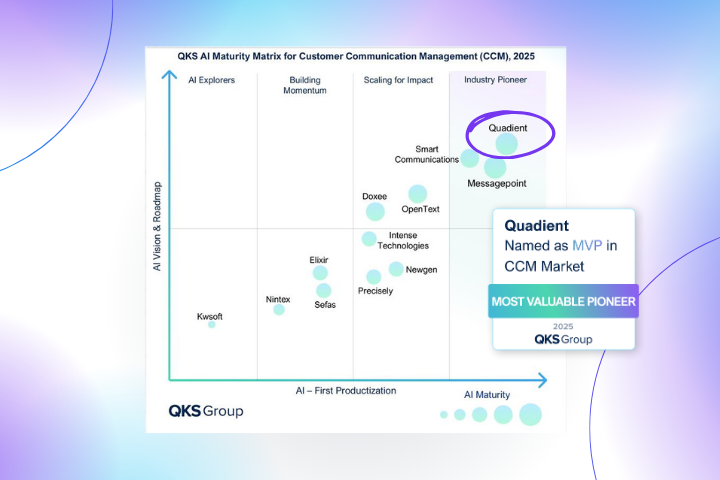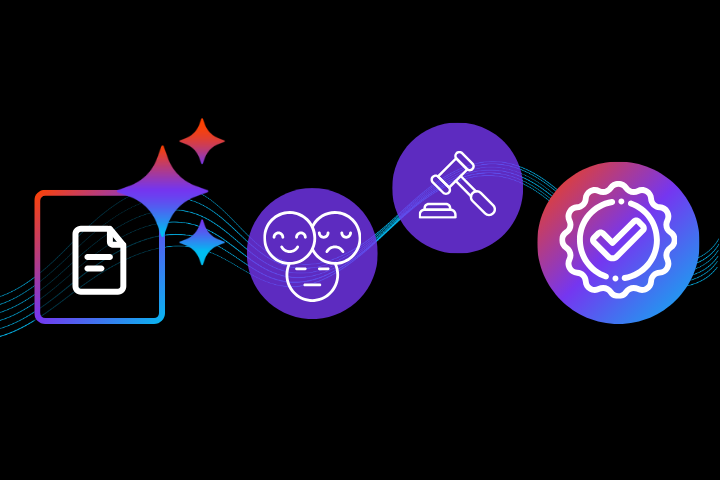Introduction
Time is of the essence in the fast-paced world of property management. Industry professionals juggle numerous property management tasks - from tenant onboarding and lease agreements to property inspections and maintenance requests. Traditionally, property managers spent countless hours manually drafting and organizing these documents. Manual processes are not only time-consuming but also prone to errors and inconsistencies.
Enter intelligent document automation. Document automation transforms the way property management businesses handle documents.
What is document automation for property management?
Document automation refers to using software to handle various aspects of document creation, storage, and distribution. This solution enables property managers to get more done by leaving manual processes behind.

The importance of document automation for property management
Property managers operate in a document-intensive environment. Lease agreements, rental applications, property inspection reports, and various forms and contracts are a part of their daily routines.
For these professionals, relying on manual document creation and management processes introduces numerous challenges, such as:
- Time-consuming processes: Manually processing documents can be tedious and time-consuming, diverting resources from essential tasks.
- Error-prone workflows: Manual document preparation can result in costly mistakes caused by human errors, such as missing signatures.
- Inefficient collaboration: Sharing documents via email or physical copies can lead to version control issues, delays, and miscommunication.
- Compliance risks: The property management industry has several legal and regulatory obligations. Failing to comply with these requirements due to human errors or oversight can result in legal consequences and reputational damage.
Intelligent document processing solutions address these challenges by streamlining and optimizing the entire document lifecycle. With document automation, property managers can create and store essential documents electronically. Digitization promotes an eco-friendly approach and enhances the accessibility and organization of vital information.
What are the benefits of document automation for property managers?
Providing an exceptional customer experience is paramount for property management firms. Embracing document automation transforms how you engage with customers, leading to enhanced satisfaction and numerous benefits for your operations.
Here's how document automation can propel your property management business to new heights:
- Enhance customer experience: Customer satisfaction is the lifeblood of your business. With document automation, you can streamline interactions and provide quick responses through familiar channels. Tailor messaging and deliver documents through your customers' preferred communication channels, ensuring a seamless and satisfying experience.
- Simplify operations: Managing properties across various locations can be challenging. By embracing digitalization and automating document workflows, you can eliminate labor-intensive tasks and avoid costly printing and mailing services. Automating document workflows reduces costs, saves time, and optimizes operational efficiency. It's a win-win situation for companies dealing with high document volumes.
- Enhance security and compliance: Document automation ensures document integrity and security when paired with mailing equipment like a folder inserter. Advanced barcode technology assigns documents to individuals, ensuring that the correct documents go into the right envelope. Additionally, automation simplifies regulatory compliance by maintaining a complete document activity history.
- Supercharge productivity: Manual document handling can be tedious and time-consuming, hindering employee productivity and morale. With document automation, you can eliminate repetitive tasks and enable your team to focus on core responsibilities.
- Save time: Time is money, and document automation can save you both. According to McKinsey, automation can save up to 30% of a company's time. By automating tasks like inserting company information and cross-referencing data, you free up valuable hours for more meaningful endeavors.
- Minimize human errors: Even the most skilled employees make errors. Document automation surpasses human accuracy and efficiency, reducing the risk of costly mistakes. Avoid misunderstandings caused by inaccurate information, prevent data leaks, and maintain productivity levels by eliminating manual data entry.
Ten critical documents property managers should automate

To fully embrace the power of document automation technology, property management professionals should automate the following crucial documents:
- Lease agreements: Lease agreements define the relationship between landlords and tenants and are an essential document in a property manager's arsenal. Property managers can quickly generate lease agreements using templates by entering the necessary tenant information.
- Rental applications: Rental applications are crucial in obtaining the necessary information and consent for tenant screening. They also provide proof of non-discrimination and gather details for collection efforts. With online forms or applications, property managers can effortlessly collect tenant information, conduct background checks, and streamline the review process.
- Maintenance requests: Automating property maintenance request forms allow tenants to submit repair or maintenance requests online. Property managers can easily track, prioritize and assign requests, as well as communicate updates.
- Move-in/out checklists: Automate move-in and move-out checklists to document the property’s condition. Easily share these documents with tenants or landlords as required.
- Tenant notices: Automate tenant notifications for various purposes, such as rent reminders, lease renewals, and eviction notices. Utilize email or automation and delivery software to send these notifications in a streamlined manner. Property managers can easily modify the templates when regulations, policies, or terms change to ensure that all future agreements are accurate.
- Rent invoices and receipts: Automating the generation and distribution of invoices streamlines the process and optimizes rent collection. Accounting or property management software enables you to automatically create and deliver tenant invoices.
- Financial reports: Automating financial reports, such as income statements and expense reports, aids in regulatory compliance and maintains accurate documentation. By leveraging digital record-keeping, property managers can establish a well-documented trail for auditing and compliance purposes.
- Tenant communication: Automate tenant communication by utilizing email or messaging platforms. Employ software or templates to send regular communications, updates, or newsletters. Online forms can include essential legal disclosures and consent forms, guaranteeing that applicants receive and acknowledge vital information.
- Compliance documents: Property managers deal with various compliance documents and regulations based on jurisdiction, location, and property type. Automating compliance documents, such as insurance certificates, HOA/COA documents, permits, and licenses, ensures adherence to legal requirements. Establish a comprehensive document library and generate the required paperwork whenever necessary.
- Renewal letters: Enhance the lease renewal process and boost tenant retention. Automate the generation of personalized renewal offers using templates and effortlessly deliver them to tenants. This streamlines the overall procedure and contributes to improved efficiency.
Get started with document automation
Here are five tips to get started with document automation for your property management business:
- Document existing workflows: Document your processes to understand the flow of tasks and identify pain points. This will help identify potential areas for automation.
- Set goals and design processes: Determine your automation goals. Improved tenant communication, or efficient lease management, for instance. Define your ideal processes.
- Identify stakeholders and technology requirements: Involve all relevant stakeholders, including property managers, maintenance teams, and administrative staff. Identify steps in your workflow that can be automated and select the appropriate technology to support the automation process.
- Focus on long-term benefits: Focus on the long-term value of automation rather than seeking quick fixes. The value of automation lies in its ability to enhance efficiency, reduce manual errors, and improve tenant satisfaction over time.
Conclusion
Document automation is a game-changer for property management professionals, streamlining workflows, saving time, and improving accuracy. By automating critical documents and utilizing centralized systems, property management professionals can enhance collaboration, ensure compliance, and increase efficiency. Embracing document automation is crucial for success in the fast-paced property management industry.







